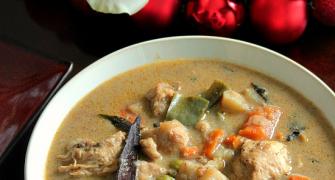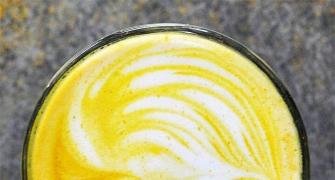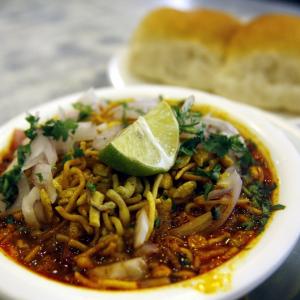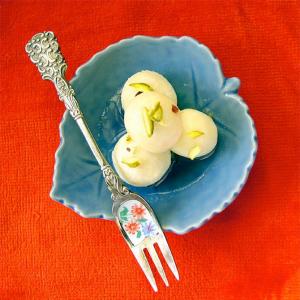'I wanted them to explore beyond samosas, tandoori chicken, naan and tikka masala, which were all delicious, but only represented a tiny portion of India's rich culinary diversity.'
In Shared Tables, Kaumudi Marathe shares family stories and recipes from Pune to Los Angeles.
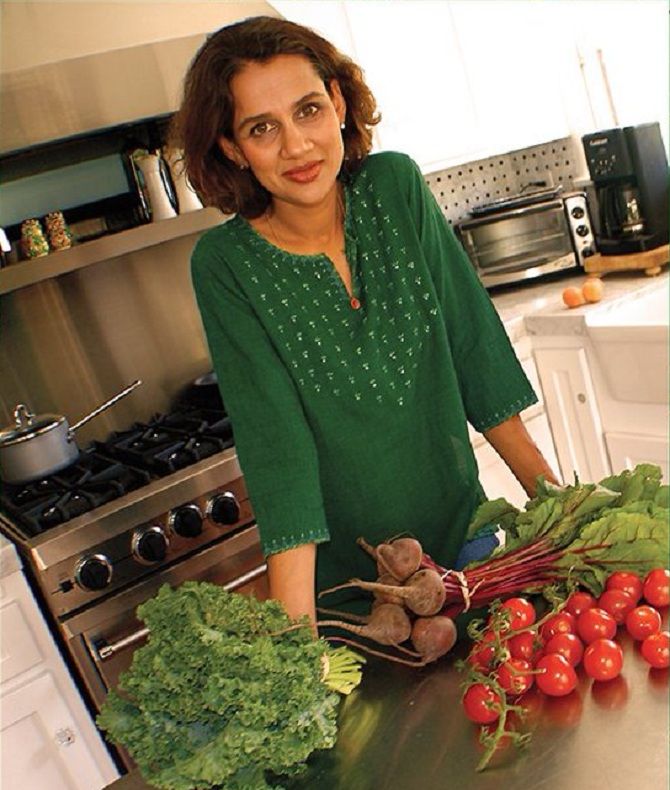
'Are you Indian?' they asked. 'We love curry.'
I was tired of hearing that question wherever I went in North America. There are only so many times you can smile politely and say thank you. I began asking people what they meant when they said curry. 'A spice blend, a sauce, my country's food?' They looked confused.
So, I decided to set the record straight, doing what a journalist does best, research.
In 2005, I studied the phenomenon of curry through the ages and wrote an article about it on spec for UC Berkley's journal of food and culture, Gastronomica. This is how I ended:
I hope that in this age of global kitchens, Westerners will discover the true diversity of flavours that make up the great Indian culinary spectrum. And I hope that in doing so, they will also begin to utilize the traditional names of Indian dishes the way they do those of French or Italian origin. Part of the answer lies in Indians using them as proudly as the French use theirs.
For now, as I look at my fragrant curry plant, I believe I've discovered the real meaning of 'curry.' It is the exotic that everyone is seeking, the hunger for an experience far from the ordinary. It is the desire for something mystical, hidden in that country where mysticism flavours all.
What I didn't know was that my research was laying the groundwork for my approach to Indian food as a collection of culinary traditions.
I was about to birth two more babies: another cookbook and my own catering company; and this article helped define their direction.
***
I wanted people to move past the idea of Indian food being greasy, spicy-hot food you got for cheap in a dive. I wanted them to explore beyond samosas, tandoori chicken, naan and tikka masala, which were all delicious, but only represented a tiny portion of India's rich culinary diversity.
I needed Americans to know what I knew; that Indian food was varied and sophisticated and textured and nutritious. I described my cooking as exotic but familiar, comforting but adventurous. It was easy to cook, once you had the basic techniques, and it could fit beautifully into American lifestyles.
My dream was for India's cuisine to attain the place that Italian, Chinese and Thai food had attained in the American psyche. To that end, I pondered a name that would be appealing, catchy and appropriate. After two weeks, I remembered an old idea I'd had. 'Irene,' I called her one morning. 'Would you mind if I used Un-Curried for the new business?'
'Not at all,' she replied in her characteristically generous fashion. 'You came up with it. You should use it.' But the more I thought about it, Un-Curried seemed too long. After a few days' contemplation, I had a brainwave.
'What do you think of Un-Curry?' I asked Sanjiv.
'Perfect,' he answered, and my new company was born.
***
My cooking classes allow me to share stories, history, folklore and a good meal with people who want to learn about Indian food. One of the first things I ask students is what spices they associate with the cuisine. Chillies? I tell them that they came from the Americas and have only been used in Indian cooking for the last six centuries or so. 'It's a myth that all Indian food is spicy. Before we had chillies, we used black pepper and ginger.' This is a revelation to many.
I pick up a jar of commercial curry powder and ask them to smell it. 'If you have this in your spice cupboard, save it for the curried chicken salad or curried puff pastry recipes from Sunset or Good Housekeeping. Please don't use it for Indian cooking. Traditionally, no one in India uses curry powder.' There is a collective gasp as people try to wrap their minds around this idea.
Then I pick up a branch of fragrant dark green leaves. 'Take a leaf, rub it between your fingers and smell its distinct aroma. Taste it. Isn't that beautiful and unique? Do you ever get that taste from curry powder? No. This leaf is from the karivepillai tree, otherwise known as the Murraya koenigii or the curry leaf tree. It is native to South India, and it is what unknowingly gave its name to the cooking of India.
'This?' I wave a branch of kadi patta in the air. 'This is the only curry there is.'
Marathe Clan: Konkanastha Braised Okra with Tamarind and Jaggery
Serves: 2-4; Time: 30 minutes
My great-aunt Susheela Marathe shared this unusual Konkanastha recipe for okra with me when I was researching my first cookbook.
Ingredients:
¼ kg okra/bhendi, washed, well-dried and stemmed
1 tablespoon (tbsp) vegetable oil
½ teaspoon (tsp) mustard seeds
Pinch of asafoetida
Pinch of turmeric
2 tbsp tamarind pulp
2-inch lump of jaggery, grated
2-3 tbsp water
¾-1 tsp salt
3-4 sprigs coriander leaves
Method:
Chop okra into ¾-inch long pieces.
Heat oil in a medium wok.
Pop mustard seeds. Stir in asafoetida and turmeric.
Sauté okra over medium-high heat for 2-3 minutes.
Stir in tamarind, water and jaggery.
Reduce heat and cook covered, stirring occasionally, 12-15 minutes.
Add salt and cook uncovered 2-3 minutes to evaporate most of the water.
Serve hot, garnished with coriander leaves.
Marathe Sirsikar Clan: Saraswat Pan-Fried Pomfret
Serves: 2-4; Time: 30 minutes marinating + 30 minutes cooking
The Saraswats love fish and I am no exception. Vahini's fried pomfret makes a delicious appetizer. If pomfret is not available, try it with thin fillets of firm, white fish like tilapia, cod, or turbot, even shrimp.
Ingredients
½ kg pomfret or other firm-fleshed white fish fillets, washed & patted dry
2 tsp salt
3 tsp turmeric
50 grams fine rice flour
2 ½ tsp red chilli powder
¼ litre vegetable oil lime wedges for garnish
Method
Rub fillets with salt and turmeric 30 minutes before frying.
Spread rice flour in a small plate.
Heat 2-3 tablespoons oil on the griddle till very hot, 4-5 minutes.
Sprinkle some red chilli over each fillet and transfer it to the rice flour, pressing down to coat both sides evenly.
Shallow-fry 6-8 coated fillets at a time, 3-5 minutes per side.
Drizzle a little oil around them as they cook.
Turn fillets when the first side is firm and golden brown.
Replenish oil as needed.
Drain well before serving hot with lime wedges and sliced onions.
Excerpted from author Kaumudi Marathe's Shared Tables with permission from the publisher, Speaking Tiger.
- On Rediff Books: Kaumudi Marathe's The Essential Marathi Cookbook

